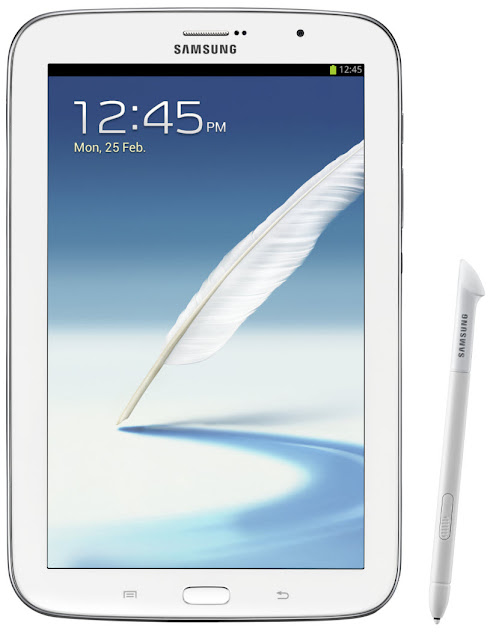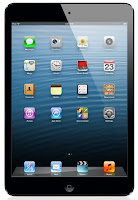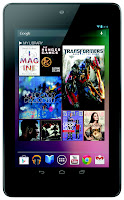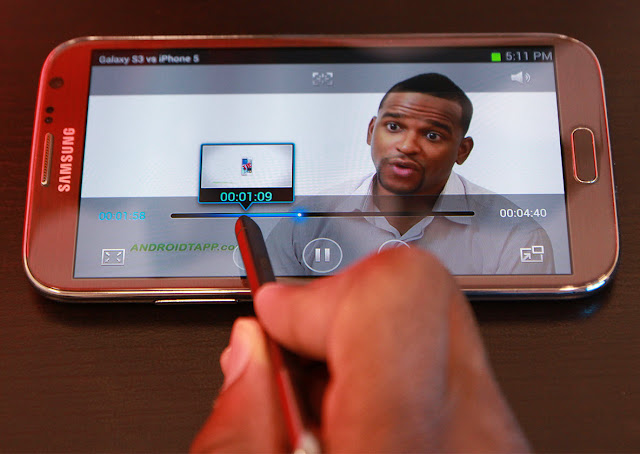Right when you were confused as to which small tablet to buy, here is Samsung with Note 8.0, the mid-range S-pen-included version of the popular Note series. You probably know about Note II and Note 10.1, the other two in the Galaxy Note family. While Note II has carved a special niche for itself in the form of a phablet, Note 10.1 hasn’t quite been a favorite.
The specialty of Notes is the added S-pen for note-taking. Note 8.0 is no different. Also, with an 8 inch slim screen, it takes Apple iPad Mini head on; we were not fond of iPad Mini from the beginning anyway. Galaxy Note 8.0 was launched in the Mobile World Congress in Barcelona.
Here is a look at the device, thanks to Engadget:
In this article, let’s look at the advantages and disadvantages of Galaxy Note 8.0 and see whether it is a good buy or not.
Technical Specifications
Here are the announced tech specs of the device. When it actually comes out, the specifications could change. Here I have, a comparison of Galaxy Note 8.0 with the competing tablets—Apple iPad Mini and Google Nexus 7.
| Feature | Samsung Galaxy Note 8.0 | Apple iPad Mini | Google Nexus 7 | |||
|---|---|---|---|---|---|---|
| Display | 8 inch LCD | LCD IPS 7.9 inches | LCD IPS 7 inch | |||
| Resolution | 1280x800 px; 189 ppi | 1024x768; 162 ppi | 1280x800; 216 ppi | |||
| Processor | Samsung Exynos quad-core1.6 GHz based on ARM Cortex-A9 | Apple A5 (dual-core) 1 GHz based on ARM Cortex-A9 | NVidia Tegra 3 1.3 GHz (ARM Cortex-A9) | |||
| Operating System | Android 4.1.2 Jelly Bean | iOS 6 | Android 4.2.2 Jelly Bean update available | |||
| RAM | 2 GB | 512 MB | 1 GB | |||
| Camera | 5 MP; 1.3 MP | 5 MP | 1.2 MP | |||
| Storage | 16/32 GB | 16/32/64 GB | 16/32 GB | |||
| Battery | 4600 mAh | 4440 mAh | 4325 mAh | |||
| Connectivity | Wi-Fi & 3G (HSPA+ 21 Mbps); 3G model not available in the US | Wi-Fi & cellular separate versions | Wi-Fi only | |||
| Other connectivity features | Bluetooth 4.0 USB 2.0 NFC | Lightning connector with USB adaptor Bluetooth 4.0 | Bluetooth Micro USB NFC | |||
| Body Dimensions | Height | 210.82 mm (8.3 in) | Height | 200 mm (7.87 in) | Height | 198.5 mm (7.81 in) |
| Width | 134.62 mm (5.3 in) | Width | 134.7 mm (5.3 in) | Width | 120 mm (4.72 in) | |
| Depth | 7.62 mm (0.3 in) | Depth | 7.2 mm (0.28 in) | Depth | 10.5 mm (0.41 in) | |
| Weight | 337.35 g (11.9 oz) | Weight | 312 g (11.01 oz) | Weight | 340 g (11.99 oz) | |
As per the technical specifications, Galaxy Note 8 is clearly ahead of the competition in the form of Asus’s Nexus 7 and Apple iPad Mini.
The Design
I don’t know if it is due to the lawsuit between Apple and Samsung, which caused Samsung to design Galaxy S3 differently (for humans), that the design of Note 8 also looks weirdly similar to S3, a slightly larger S3 to be exact. It still has the rim-width resembling the iPad. The design is not quite different from the existing tablets. The robustness of the body is only on the top of the display, which is covered with Corning Gorilla Glass 2.
[Short Update]
We had a comment from one of our readers about the presence of Gorilla glass on Note 8. We inquired Samsung itself about this, and got the confirmation that Note 8 (N5110) does have Gorilla Glass. Here is the tweet from Samsung support:
@bluebugletech Hey there! The Galaxy Note 8.0, GT-N5110 does have Gorilla Glass. Please LMK if you have any other ?s. ^Sabrina
— Samsung Support USA (@SamsungSupport) April 26, 2013
The back is made by Samsung’s “trademarked” cheap plastic.
Although the tablet has the largest display of the three mentioned, it weighs slightly less than Google Nexus 7, and it is a good thing. With wider rim, it is easier to hold without blocking the display. All in all, there is nothing awe-inspiring about this tablet. It is just your regular note, only in a medium form.
The Performance
Exynos is a power-packed processor. It is one of the best among the tablet processors out there today. Nexus 10 tablet running Exynos 5 performs better than Apple iPad 4, which has Apple A6X SoC (based on Swift architecture). Current Note 8 probably has Exynos 4412 SoC that comes on other devices like Galaxy S3, Note 10, etc.
However, on Nexus 10, Samsung has included the more recent power-packed processor, Exynos 5 (5250). It performs like a stud, and comes one notch above iPad (4th gen).
In Geekbench benchmarking results, Nexus 7 (with Tegra 3) gets scores above 1400 and Apple iPad Mini (which includes the A5 chip based on Cortex-A9 that shipped with iPad 2) has scores in 750 range. Galaxy Note 8, which includes the same processor as Note II, is expected to score nearer to 2000 points.
Hence, in terms of performance, Galaxy Note 8 should be the best of the three. Here is a Geekbench comparison chart between some major tablets:
| Tablet and processor | Geekbench score |
|---|---|
| Google Nexus 10 (Exynos 5250 Cortex-A15) | 2433 |
| Samsung Galaxy Note II (Exynos quad-core 1.6 GHz) | 1924 |
| Apple iPad 4th gen (Apple A6X dual-core 1.4 GHz) | 1775 |
| Asus Nexus 7 (NVidia Tegra 3 Cortex-A9) | 1481 |
| Apple iPad Mini (dual-core Apple A5 1 GHz) | 755 |
Another important aspect about Note 8’s processor is that it still is based on Cortex-A9 microarchitecture, which has recently been replaced by Cortex-A15. The upcoming processor, NVidia Tegra 4 and Samsung’s own Exynos 5 will include Cortex-A15 core. It is hence a disappointment that Note 8 still has Cortex-A9, while Samsung’s own Nexus 10 has a Cortex-A15 processor.
Other Aspects
The display of Note 8 is regular LCD backlit with probably the Super PLS technology Samsung has been promoting on other devices, Note 10 and Nexus 10. Samsung hasn’t supplied Super AMOLED on a screen larger than 5.3 inches yet. The display should be comparable to LCD IPS on iPad Mini and Nexus 7, although the iPad Mini has a ridiculously low pixel density out of the three tablets.
Note 8.0 runs Android 4.1.2 Jelly Bean operating system. As you can see Nexus 7 is already leading with 4.2.2 version. Since Nexus is a Google tablet, the latest version of the operating system is naturally available to it first. Samsung has implemented the TouchWiz overlay on Note 8, and it involves better multi-tasking features.
Note 8 also includes the largest of batteries among 8 inch tablets. With that 4600 mAh battery, you can probably keep the charge longer than the other tablets.
As usual, Note 8 comes with the S-pen, Samsung’s own note-taking pen that comes with all of Note devices. Note II with the S-pen have in fact been one of the favorite devices out there, although we mentioned earlier that you should wait till a better upgrade gets released.
An improvement in Note 8 is that the S-pen can now operate the menu buttons at the bottom. The tablet has a number of apps to take advantage of the pen, and you may know them if you are familiar with other Notes. Air View, S Note, Easy Clip, Idea Sketch, Shape Match, etc., are some of them.
Another aspect is connectivity. If you are expecting to insert a SIM into this tablet, you should be in the right country. In the US, only Wi-Fi version is available.
Also, the current Note 8 doesn’t include LTE capabilities, and it has no tie-up with Qualcomm that manufactures LTE baseband for other Samsung devices like Galaxy S3. The 3G version with only 21 Mbps download limit is available in other countries, where the LTE is probably not popular.
Build Quality
Build quality of Samsung devices has not been great. A fall from a feet above ground could break them. In our list of most durable phones, none of the Samsung devices were featured due to this. Note 8 is no different. It has regular plastic back and thin Gorilla Glass protection on the front screen.
It is however not ideal to compare build quality of tablets, which you are less likely to drop than a smartphone. In build quality, Nexus 7 and iPad Mini are better than Note 8.
The Price
We don’t know the price yet. However, in order to compete in the market with other low-cost tablets, and the awfully pricey and yet popular iPad Mini, Galaxy Note 8 has to be perfectly priced.
[Update]
Galaxy Note 8 has been released to the US market for a starting price of 399 dollars for the 16 GB version. The device has been found in Best Buy, Amazon.
Note 10 had received positive reviews, although when it came to sales, Nexus 10, which has an amazingly better performance, did take the lead. In a world with two almost similar tablets, who do you think will come up on the top? Only the better performing one (excluding all Apple products, of course).
In this comparison between 7 inch tablets, price is an important factor. People purchase medium tablets if the price is right. iPad Mini is the only device that doesn’t honor this philosophy. It is priced anywhere between 329 to 659 dollars based on the configuration. This is ridiculously higher than Nexus 10, which starts at 399.
There is nothing in iPad Mini’s hardware to justify that kind of price.
When it comes to pricing, there are two major competitors to Note 8—Nexus 7 and Kindle Fire HD, both of which retail at around 199 dollars. Note 8 definitely has better features and hardware specs than Nexus 7 and Kindle Fire HD, but it has to work on the pricing to come on top. The failure of Note 10 was only due to the price, which at around 550 dollars was slightly higher than Nexus 10’s.
Conclusion
Samsung Galaxy Note 8 will be released to a great competition. There is a rumor of iPad Mini 2 that may include a Retina display. Price is an important factor that decides the success of Note 8. On any day, Note 8 will be a better purchase than Apple iPad Mini. Our recommendation, hence, is go ahead, buy Note 8 when it comes to the market by April-June time.
[Image source: AndroidTapp, AllThingsD, TechnologyTell]





